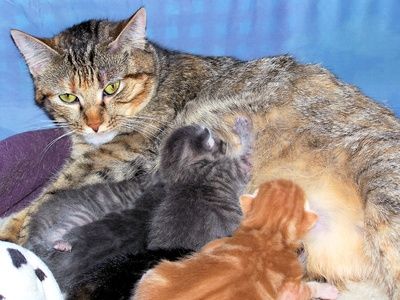Why spay/neuter?

By spaying or neutering your pet, you are preventing the suffering and death of literally thousands of its offspring. One female cat and its offspring can produce up to 420,000 kittens in just seven years. One female dog and her pups can produce up to 67,000 more dogs over a six year span.
According to statistics compiled by the Colorado Department of Agriculture, over 173,000 dogs and cats entered Colorado shelters in 2006. More than 43,000 of those pets were euthanized, Many of these animals were purebred. Even if homes are found for animals born from “accidental litters”, many of these animals will end up in shelters, or reproduce themselves and contribute to these statistics. According to a study by Ohio State University, the top three reasons people surrendered their dogs are behavior problems, lack of resources, and moving. The top three reasons for surrendering cats are moving, behavior problems, and allergies.
Spaying and neutering provides solutions to many of these problems. Altered pets are less likely to roam. Spaying and neutering decreases aggression and territorial behavior in dogs and cats. Animals that are altered are less likely to mark. Many rental properties require that pets be spayed or neutered. In addition, spaying and neutering decreases certain types of cancer and contributes to pets’ longevity.
Studies show that cats can be safely spayed and neutered by age 5 months. Female cats can go into heat and become pregnant as early as 5 months of age. Organizations such as American Humane Association and the Humane Society of the United States endorse early spay/neuter procedures as an effective means to ensure that animals will not produce unwanted puppies and kittens that will ultimately be euthanized.
Thank you for becoming part of the solution to end the suffering and euthanasia.
.